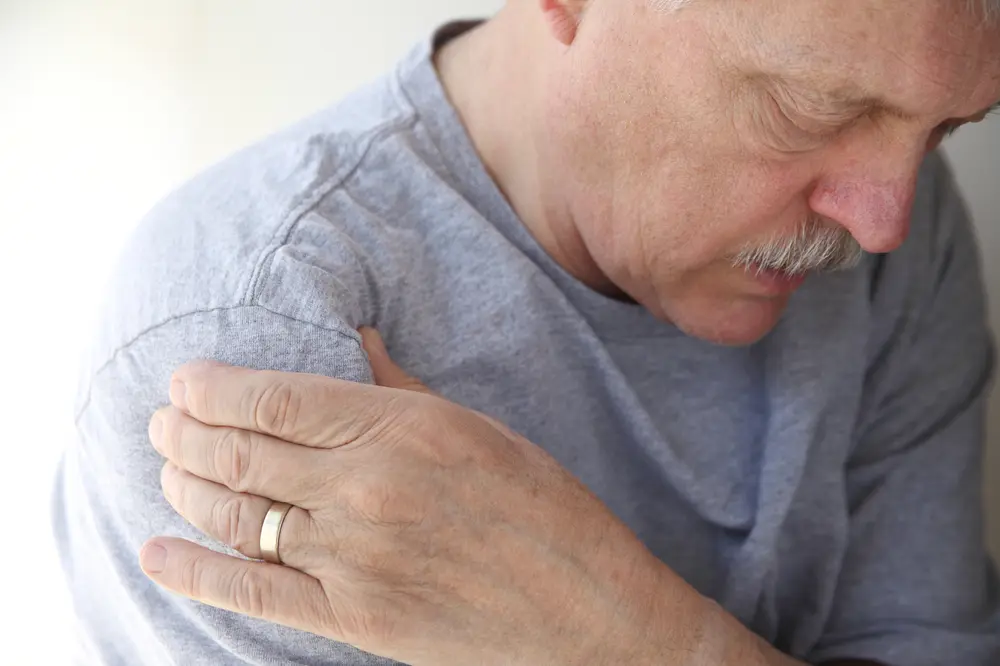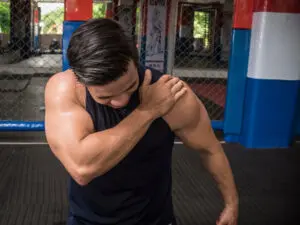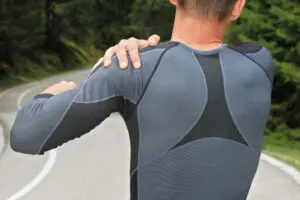What do a painter, a basketball player, and Roger Federer all have in common? It may surprise you to learn that the answer is: they are all at risk for a rotator cuff injury, especially as they get older.
While professional athletes frequently encounter these types of injuries, others who perform jobs that cause them to raise their arms over their head are also at risk of tearing their rotator cuff.
The Complicated Shoulder
It’s tough to do much of anything without involving your shoulder. Driving a car, picking up a child, doing laundry, or just brushing your hair all require shoulder movement and strain.
The rotator cuff is a group of four tendons and shoulder muscles that surround the joint of the shoulder. It helps to keep the head of your upper arm firmly in the socket of the shoulder.
The shoulder has more range of motion than any other joint in the body, which also makes it prone to a wide range of injuries. Tearing a tendon in your shoulder is quite commonplace and, as we age, it becomes even more likely that we will suffer a rotator cuff injury. You need not be an athlete to be concerned or be aware of the risks.
When to Be Concerned
At the first sign of shoulder pain or discomfort, see Dr. Samuel Koo or a physical therapist skilled in musculoskeletal problems for help and a diagnosis.
Pain on the top of your shoulder or down the outside of your arm, a weak shoulder, loss of motion, weakness in your arm, and the inability to reach behind your back or upward are all signs that something is not right. It could be a partial tear, but speak to someone with expertise in order to find out the true cause of your shoulder pain.
Main Causes of Rotator Cuff Injuries
The common causes for a rotator cuff injury include overuse, such as with heavy lifting, an injury or traumatic event like a fall, repetitive motions, and gradual degeneration of the muscles and tendons.
In truth, a rotator cuff injury can happen to the young or old, athlete or couch potato. However, men over the age of sixty-five are among those most vulnerable to a torn rotator cuff.
Prevention
The most important way to prevent a rotator cuff injury is to see Dr. Samuel Koo or a physical therapist as soon as you notice any discomfort. This can prevent the injury from becoming more severe.
Some of the best ways to prevent rotator cuff injuries include the following:
- Exercise and target both the small and large muscles of the shoulder to strengthen the rotator cuff.
- Keep good posture. Leaning forward with your head and shoulder can cause a shoulder blade problem and may lead to shoulder impingement syndrome.
- Avoid sleeping on your side with your arm stretched overhead. Try not to lie on your shoulder while you sleep.
- Don’t smoke as it decreases blood flow to the rotator cuff.
- Avoid activities with repetitive overhead arm action. Speak to your physical therapist about alternate motions that might be less risky.
- Practice low resistance exercise and introduce more repetitions to gradually strengthen the small muscles of the shoulder without the risk of injury. Keep movements slow and steady.
- Include arm raises to the side with external rotation and rest the shoulder before a workout routine.
- Frequent massage with hot and cold compresses will be able to help reduce inflammation.
Contact Dr. Samuel Koo today by requesting an appointment online or calling (425) 823-4000 if you think you may have injured your rotator cuff.




